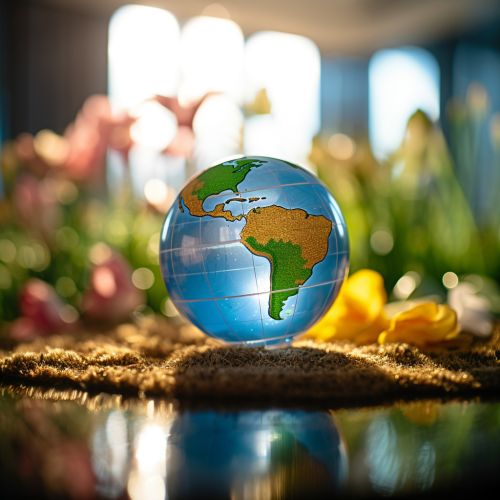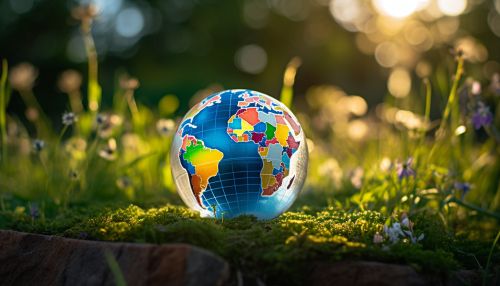Sustainable Development Goals
Introduction
The Sustainable Development Goals (SDGs), also known as the Global Goals, are a collection of 17 interlinked goals designed to be a "blueprint to achieve a better and more sustainable future for all". The SDGs were set up in 2015 by the United Nations General Assembly and are intended to be achieved by the year 2030. They are included in a UN Resolution called the 2030 Agenda or what is colloquially known as Agenda 2030.


Background
The Sustainable Development Goals are the brainchild of the United Nations, a product of a lengthy process of consultation and negotiation, with countries from around the world contributing to their formulation. The goals are broad based and interdependent. The 17 Sustainable Development Goals each have a list of targets which are measured with indicators. The targets are designed to be integrated and indivisible, global in nature and universally applicable.
Goals
The 17 goals are all interconnected, and in order to leave no one behind, it is important that we achieve them all by 2030. Here are the goals:
No Poverty
The first goal, No Poverty, aims to end poverty in all its forms everywhere by 2030. It also aims to ensure social protection for the poor and vulnerable, increase access to basic services and support people harmed by climate-related extreme events and other economic, social and environmental shocks and disasters.
Zero Hunger
The second goal, Zero Hunger, pledges to end hunger, achieve food security and improved nutrition, and promote sustainable agriculture. This goal proposes more investments in agriculture, including government spending and aid.
Good Health and Well-being
The third goal, Good Health and Well-being, aims to ensure healthy lives and promote well-being for all at all ages. It seeks to increase health financing and support health workforce in developing countries, among other policy measures.
Quality Education
The fourth goal, Quality Education, aims to ensure inclusive and equitable quality education and promote lifelong learning opportunities for all. The goal is to increase supply of qualified teachers and increase scholarships available to developing countries.
Gender Equality
The fifth goal, Gender Equality, aims to achieve gender equality and empower all women and girls. It seeks to end discrimination and violence against women and girls and ensure equal opportunities and access to leadership and decision-making.
Clean Water and Sanitation
The sixth goal, Clean Water and Sanitation, aims to ensure availability and sustainable management of water and sanitation for all. It seeks to protect and restore water-related ecosystems and support participation of local communities to improve water and sanitation management.
Affordable and Clean Energy
The seventh goal, Affordable and Clean Energy, aims to ensure access to affordable, reliable, sustainable and modern energy for all. It seeks to increase the share of renewable energy and improve energy efficiency.
Decent Work and Economic Growth
The eighth goal, Decent Work and Economic Growth, promotes sustained, inclusive and sustainable economic growth, full and productive employment and decent work for all. It seeks to achieve higher levels of productivity and technological innovation.
Industry, Innovation, and Infrastructure
The ninth goal, Industry, Innovation, and Infrastructure, aims to build resilient infrastructure, promote inclusive and sustainable industrialization, and foster innovation. The goal is to increase access to information and communications technology and provide universal and affordable access to the Internet in least developed countries.
Reduced Inequalities
The tenth goal, Reduced Inequalities, aims to reduce income inequality within and among countries. It seeks to ensure equal opportunity and reduce inequalities of outcome, including through measures to eliminate discriminatory laws, policies and practices.
Sustainable Cities and Communities
The eleventh goal, Sustainable Cities and Communities, aims to make cities inclusive, safe, resilient, and sustainable. It seeks to reduce the adverse effects of urbanization, including air pollution and other environmental impacts.
Responsible Consumption and Production
The twelfth goal, Responsible Consumption and Production, aims to ensure sustainable consumption and production patterns. It seeks to achieve the sustainable management and efficient use of natural resources.
Climate Action
The thirteenth goal, Climate Action, aims to take urgent action to combat climate change and its impacts. It seeks to strengthen resilience and adaptive capacity to climate-related hazards and natural disasters.
Life Below Water
The fourteenth goal, Life Below Water, aims to conserve and sustainably use the oceans, seas and marine resources for sustainable development. It seeks to prevent and significantly reduce marine pollution and protect and restore marine and coastal ecosystems.
Life on Land
The fifteenth goal, Life on Land, aims to protect, restore and promote sustainable use of terrestrial ecosystems, sustainably manage forests, combat desertification, and halt and reverse land degradation and halt biodiversity loss. It seeks to ensure the conservation of mountain ecosystems, including their biodiversity.
Peace, Justice and Strong Institutions
The sixteenth goal, Peace, Justice and Strong Institutions, aims to promote peaceful and inclusive societies for sustainable development, provide access to justice for all and build effective, accountable and inclusive institutions at all levels. It seeks to significantly reduce all forms of violence, and work with governments and communities to find lasting solutions to conflict and insecurity.
Partnerships for the Goals
The seventeenth goal, Partnerships for the Goals, aims to strengthen the means of implementation and revitalize the global partnership for sustainable development. It seeks to enhance North-South and South-South cooperation by supporting national plans to achieve all the targets.
